Campanina Chair - the famous Chiavari Chair
- Mandilli de Saea

- Jan 25, 2020
- 4 min read
The Campanina chair, or Chiavari chair (incorrectly called "chiavarina") was created in 1807 by the Chiavari cabinetmaker Giuseppe Gaetano Descalzi, nicknamed "Il Campanino" because he was descended from a family of bell ringers (in Italian : Campanari). Mr. Descalzi, encouraged by the partnership with the new born Economic Society of Chiavari, reworked some models of French chairs that can be traced back to the Empire style, simplifying the decorative apparatus and reducing the sections of the structural elements
The new chair immediately appeared in all its singularity: a design of great modernity, clean and minimal, without the decorative excesses typical of the time but above all a completely new structure that left everyone amazed (and still does) for its skill to combine extreme lightness with unequaled strength.

The particular lightness was obtained through the structural sections: each component of the chair was in fact sized according to the specific stresses to which it was called to respond. The interlocking system developed by the "campanino" still contributes to the robustness of the structure.
It is even said that to test its quality, Mr. “Campanino” wanted to throw the chair out of the window: it seems that the chair, weighing just over a kilogram, bounced on the street below without breaking, showing its extraordinary characteristics.
The woods originally used were wild cherry and maple, also beech and sometimes ash, all coming from the inland woods.
The seat was made with thin strips of marsh willow, hand-woven in weft and warped directly on the chair frame and knotted according to the system designed by Descalzi himself.
The chair was successful and in a short time many manufactures started to produce it in Chiavari and in the neighboring municipalities: at the death of Gaetano Descalzi, which occurred in 1855, there were about 600 workers employed in the sector.
Soon this chair reached a strong popularity all over Europe: it was given as a gift to Pope Leo XIII in 1892 and appreciated by the most important courts in Europe in the 19th century, such as the Charles Albert of Savoy’s one, Napoleon III’s, Francis I of Bourbon ‘s and Queen Victoria of England’s, as well as by the sculptor Antonio Canova, up to conquering United States ‘ market in more recent times.
This type of chair showed up at the wedding reception of John and Jackie Kennedy and at the White House during the historic meeting between Reagan and Gorbachev.
The architect and designer Gio Ponti drew inspiration from the structural system of the Chiavari chair for his 1955 Super light chair (produced by Cassina).
The fortune of the original Chiavari chair declined over the last decays to the competition with its industrial production and to the advent of the Austrian Thonet chairs, mass-produced, less expensive and made up of a few easily removable elements.
Chiavari light chair’s story is a dense one of CRAFTS, DESIGN and international COLLECTIONS that intertwines workers and personalities in architecture and culture. Thanks to present collectors, the Chiavari light chair is still available in the main public and private European and American residences and has become part of important MUSEUM COLLECTIONS of international design.
In Chiavari the “Guido and Anna Rocca museum”, inaugurated in 2018, collects various examples of Campanina chairs, covering 2 centuries of history, art and design telling abou it. The Museum was born thanks to the donation of Anna Marchese and Guido Rocca and to the support of the Economic Society of Chiavari
As current artisan production, 2 historic workshops still survive in Chiavari, which have now developed in real modern factories, but maintaining the manual techniques and materials of the past.
The construction technique
Today's production of the Chiavari chair, albeit with the inevitable introduction of electrical machinery, still retains a character of absolute craftsmanship by faithfully tracing the construction steps in which Campanino himself worked, more than two centuries ago, in his workshop.
The choice of wood begins in the woods of the Ligurian hinterland. There, the expert eye of the craftsman personally identifies the plants intended for cutting, based on the size and morphology of the tree. The latter is cut considering specific factors such as the seasonal period and the moon phase.
Immediately after cutting, the trunk is brought to the sawmill where, under precise instructions from the carpenter, it is cut into boards of different thickness according to the parts of the chair that will be obtained from it.
Seasoning
Seasoning is a fundamental phase for determining the quality of the raw material and its duration over time.
To obtain the best results, it must be carried out in a strictly natural way allowing the air circulating spontaneously to gradually dry the wood. The curing times depend on the thickness of the boards, normally it takes between two and five years to guarantee optimal performance.
The workmanship
The real manufacturing can only begin when the wood is dried to perfection.
The wooden boards are then brought to the workshop and the various parts of the chair are traced and cut following the appropriate patterns. These cut parts are firstly shaped by manually operated machines, then carefully finished by hand to eliminate even the smallest imperfection. The hours of sanding necessary to obtain a surface that tends to perfection are not counted. Some components are instead turned by hand to a degree of finish unattainable by any industrial machinery.
For the assembly, animal glue heated in a water bath is still used, while the joints are calibrated one by one, so that a considerable amount of strength and many "club hits" are required for perfect union. That’s what guarantees the extraordinary durability o these chairs.
The mending
The straw itself contributes to the great strength of the structure.
Thin Indonesian reed filaments, very strong and durable, are woven with fast and safe gestures by patient hands, directly on the assembled chair, according to a weft and warp design.
Polishing
Polishing is the phase that completes the chair: it enhances the nature of the materials and protects them from aging and humidity.
The possibility of choosing the finishes and colors, in accordance with the artisanal nature of the product, is vast and is designed to satisfy the tastes of all customers, even the most demanding.






















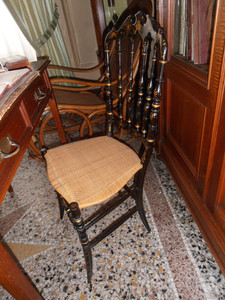



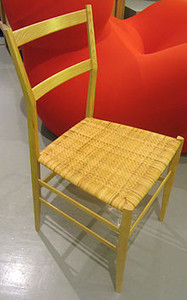









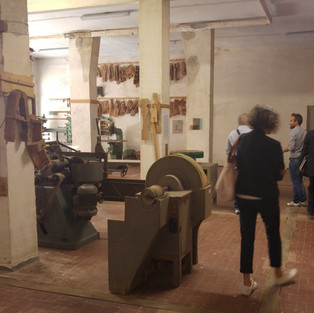

















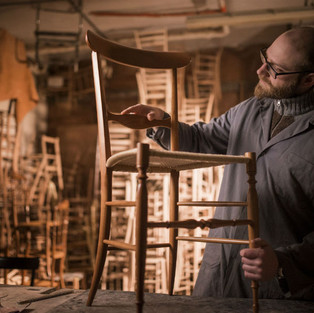

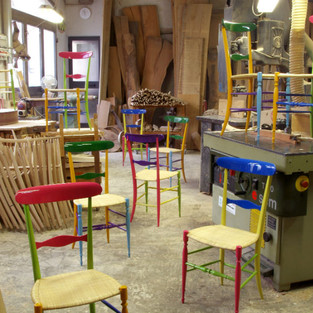



Comments